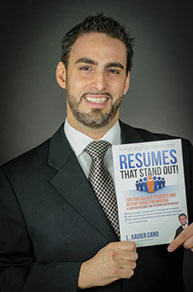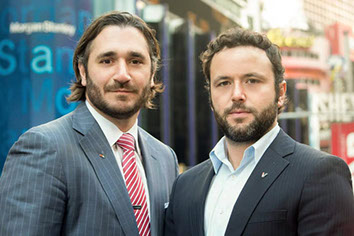
Resume Power
A winning resume is a necessity for anyone looking to land their next job and move up in their career. In an economy where everyone is competing for the best jobs, it is important to understand the secrets of successful resume writing. In my opinion, the work experience section is the most important part of the resume. However, most people fail to make an impression in this section, thereby not differentiating themselves among the rest of the applicants.
applicants.
The work experience section of the resume will have a greater impact if you also include within your job duties a little bit about what you learned, skills gained, or the difference you made for the company. Including these additional items is crucial because it will give the recruiter a deeper understanding of your strengths and what you could bring to the table, as opposed to just your job duties.
For example, let’s say that I write the following as one of the bullets in the work experience section of my resume, “Created a training manual on the usage of new scanners.” This is a good start because it highlights something I did in a past role. If the recruiter is looking for someone who has experience in creating training manuals and some knowledge of scanners or other similar devices, then this is fine. However, I can also include what I learned and the skills I gained while creating the training manual.
For example, I can say, “Gained valuable cross-functional communication skills when creating a training manual on the usage of new scanners”, “Learned optimal bargaining strategies to interact with vendors when creating a training manual on the usage of new scanners”, or “Became proficient at analyzing key manufacturing process steps when creating a training manual on the usage of new scanners”.
You can see that the information in these bullets provides more depth into what I did because it shows what I learned and or skills gained. The original bullet was fine and explained what I did, but the examples that followed would provide the recruiter additional information about my transferrable skills and experiences.
I can also include how I made a difference in the company while creating the training manual. I can say, “Improved training for 300+ employees by creating an effective training manual on the usage of new scanners”, “Eliminated defects in the main assembly line by 15% by creating an effective training manual on the usage of new scanners”, or “Increased productivity at the warehouse by 20% by creating an effective training manual on the usage of new scanners”.
As you can see, the original bullet was fine, but these three examples are stronger because they show how I made a difference in addition to what I did. The recruiter will see these accomplishments as proof of my problem-solving skills, which are valuable to any company.
To make your resume stand out, each item pertaining to your job description should also be in bullet format. This will allow the recruiter to read your resume faster. If you write what you did in a paragraph form instead of a bullet form, the recruiter will most likely not read everything you included in the resume. With as many talented candidates submitting resumes on a daily basis, recruiters spend less than thirty seconds, on average, reading each. To be effective, always use bullets.
Each bullet should also be kept to one or two lines. Again, the fewer words you can use to describe what you did, what you learned, and skills gained, or how you made a difference, the better. If you have to use two lines of resume space for a particular bullet, go ahead. However, one line per bullet is preferred. Three or more lines for a particular bullet is too much and will most likely not be read.
Each role you include in the work experience section should also have at least three bullets. How much work experience you have per position held will dictate how many bullets you include for each role. However, at minimum, there should be three bullets per role listed on the resume.
Each bullet should start with a verb because it will show you accomplished something from the start. The verb should be in past tense if the activity you are describing already took place. Make sure to start each bullet with a verb different from the one before it. Using the same verb back-to-back for subsequent bullets will not flow as well.
Quantifying your achievements when possible within the work experience section can separate you from the rest of the job applicants. Quantifying or using numbers to describe your work-related results gives the recruiter a better idea of the magnitude of your accomplishments. You do not need to quantify the contents of every bullet, but do so if possible.
Hopefully you found these tips useful for enhancing the work experience section of your resume. Incorporating these tips can set you apart from the rest of the applicants and get you closer to your dream job. Good luck!
L. Xavier Cano, known today as The Resume Whiz®, has been coaching resume writing and other professional development topics for over a decade. He is the founder of Innovative Resume Consulting LLC and his current book, Resumes That Stand Out!, provides valuable insights into what one can do to create a memorable resume. For more information, visit www.TheInnovativeResume.com
(l-r) David L. Cohen, Rep. John Lewis, and Javier Palomarez
Connecting Media Through Social Impact
In today’s world, media occupies an everyday presence in our lives and therefore, it plays a significant role in shaping our society. It not only informs about what is happening around us, but also shapes our opinions and judgments on variety of issues. In this way, media has also become a tool to create movements aimed at changing the world by solving major issues from the macro level all the way down to local communities.
 Sergio Fernandez de Cordova and Antonio Ruiz-Gimenez, Co-Founders of PVBLIC Foundation, created the Media for Social Impact Summit (MFSI) to lead the media community in using their assets for social impact in a concerted manner. MFSI is a platform that features an annual summit at the United Nations convening media leaders and influencers, with a goal of celebrating the importance of media in creating social impact. The summit showcases innovative media campaigns that had a significant impact on society during the previous year. It also provides a unique opportunity for delegates to network and learn from the brightest minds in media, while building long-lasting partnerships that further social progress.
Sergio Fernandez de Cordova and Antonio Ruiz-Gimenez, Co-Founders of PVBLIC Foundation, created the Media for Social Impact Summit (MFSI) to lead the media community in using their assets for social impact in a concerted manner. MFSI is a platform that features an annual summit at the United Nations convening media leaders and influencers, with a goal of celebrating the importance of media in creating social impact. The summit showcases innovative media campaigns that had a significant impact on society during the previous year. It also provides a unique opportunity for delegates to network and learn from the brightest minds in media, while building long-lasting partnerships that further social progress.
The Summit has a successful track record in advancing purposeful partnerships around social impact. The 2015 MFSI Summit gathered over 350 media leaders, influencers and prominent UN officials to help focus the media and advertising world’s attention on the Sustainable Development Goals. There, a 15-year strategy was launched called the Most Important Campaign. Global communications married with an ambitious long-term strategic plan is necessary to engage, inspire and mobilize worldwide action in order to ensure a successful, transformative and universal outcome for the Unites Nations’ Post-2015 Agenda, and the Most Important Campaign will be one of convening platforms used to create and catalyze partnerships with this global conversation. PVBLIC is working with a range of media and communications partners that made commitments; either for immediate execution or for the long term strategic use for the broader vision by contributing to the implementation of the Sustainable Development Goals and related social impact initiatives and events.
In September 2014, PVBLIC Foundation partnered with the White House and Mekanism to launch the It’s On Us campaign, aimed at fundamentally shifting the way we think about sexual assault. The campaign is a rallying cry inviting everyone to step up and realize that the solution begins with us. The It’s On Us campaign is considered to be one of the most successful media campaigns ever executed in the United States, and was one of the featured case studies at the 2015 Media for Social Impact Summit. The campaign has been able to maintain its ongoing momentum primarily because of the partnerships created at the summit.
Lately when you speak to these two impact leader you will find them full of pride and joy with the most recent launch of PVBLIC LATAM something that is near and dear to both their hearts. PVBLIC LATAM is led by executive director Angela Hirsch Rizo out of Miami. This new division of PVBLIC focuses their work on the Latin American region and the Hispanic community. With the world transitioning into a new Development Agenda, with global efforts being made to implement and achieve the Sustainable Development Goals. PVBLIC LATAM, together with UNCTAD, Cala Foundation and other partners, will be hosting the Latino Impact summit on September 8th, 2016 at the United Nations headquarters in New York, with the objective to engage the Latino population in these efforts looking at the impact that can be cultivated in the region.
The Chairman of PVBLIC Foundation, Sergio Fernandez de Cordova stated: “The goal of Latino Impact is to increase and improve philanthropy and impact investing. In addition, there is an objective to generally align investment with the SDGs by bridging communities of wealth, impact and social entrepreneurship in Latin America, and assisting the development of the region by building a solution oriented platform.” Empowering Latinos, by Latinos, the event will bring together influential member of the Latino community from the private and public sector for a high level event to share ideas about the future of the region and to identify the areas most crucial to address.
The ultimate goal for PVBLIC Foundation and its Media for Social Impact platform is bigger than simply creating partnerships. The ultimate goal is to inspire the leaders of the global media and advertising community to use their resources and harness the power of media to create real impact and positive change in the world.
According to Antonio Ruiz-Gimenez, “Media is everywhere. It influences our decisions everyday. The power of media is endless, and through MFSI we educate decision makers about the power that their organizations have in the lives of others. We have a responsibility to maximize media assets across the board, and MFSI has become the catalyst for that. Decision makers in the media world how gather each year at MFSI to share ideas in this area, and the energy in the room creates results that we never thought possible. We are committed to continuing to grow this movement.”